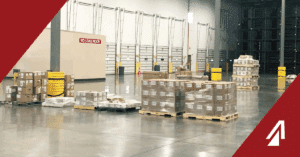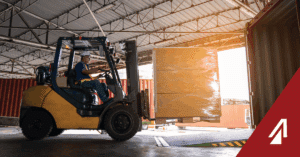For any company that ships products, pallets are an essential resource for moving materials safely and efficiently. In the past, deciding what type of pallets to use has been a relatively easy decision as over 90% of the world’s pallet supply has been strictly wood based. However, shippers are no longer restricted to wood-based pallets with newer materials being introduced into the mix to accommodate needs that have gone unmet. Choosing between wood, plastic, metal, and other material is an important decision to ensure freight is moved in a safe and efficient manner.
With each pallet material having advantages and disadvantages, we will focus on the two main pallet materials in consideration:
• Wood pallets (industry leader at 90% usage)
• Plastic pallets (4%-5% of pallets used, but growing and becoming more common)
Wood Pallets
Advantages:
• Lowest Cost
• Easy to Repair
• Recyclable
• Customized and constructed quickly
• Greater traction so products do not slide or shift as much
• More eco-friendly
Disadvantages:
• Weakens and warps
• Less safe to handle due to nails, screws, and splinters.
• Needs to be replaced more often
• Unable to be cleaned
• Wood encourages bacterial growth when wet
• Wood must be treated when shipping internationally
Plastic Pallets
Advantages:
• Safer to handle with no nails or splinters
• Extremely durable resulting in long-term cost value
• Safe in damp and moist environments
• Has the ability to be cleaned easily
• Lighter weight than wood (reduction in shipping costs)
• Recyclable
• No need for treatment internationally
Disadvantages:
• Higher cost
• Must be replaced if damaged
• Less traction so products slide and shift more
• Cannot hold as much weight as wood pallets
• Less eco-friendly
All of these elements need to be taken into consideration when planning your supply-chain and weighing how the specific advantages and disadvantages of each element could affect your company. For example, those operating in a closed-loop supply chain, in the food industry, would find that durable and long lasting plastic pallets would be most effective since being both reused multiple times and easy to clean. The opposite is the case for an open-loop supply chain, in the manufacturing industry, where inexpensive, yet, strong wood pallets would make more sense. Each industry and company has it’s own standards and needs, and making these strategic decisions can significantly affect cost, damages, productivity, and customer satisfaction.



